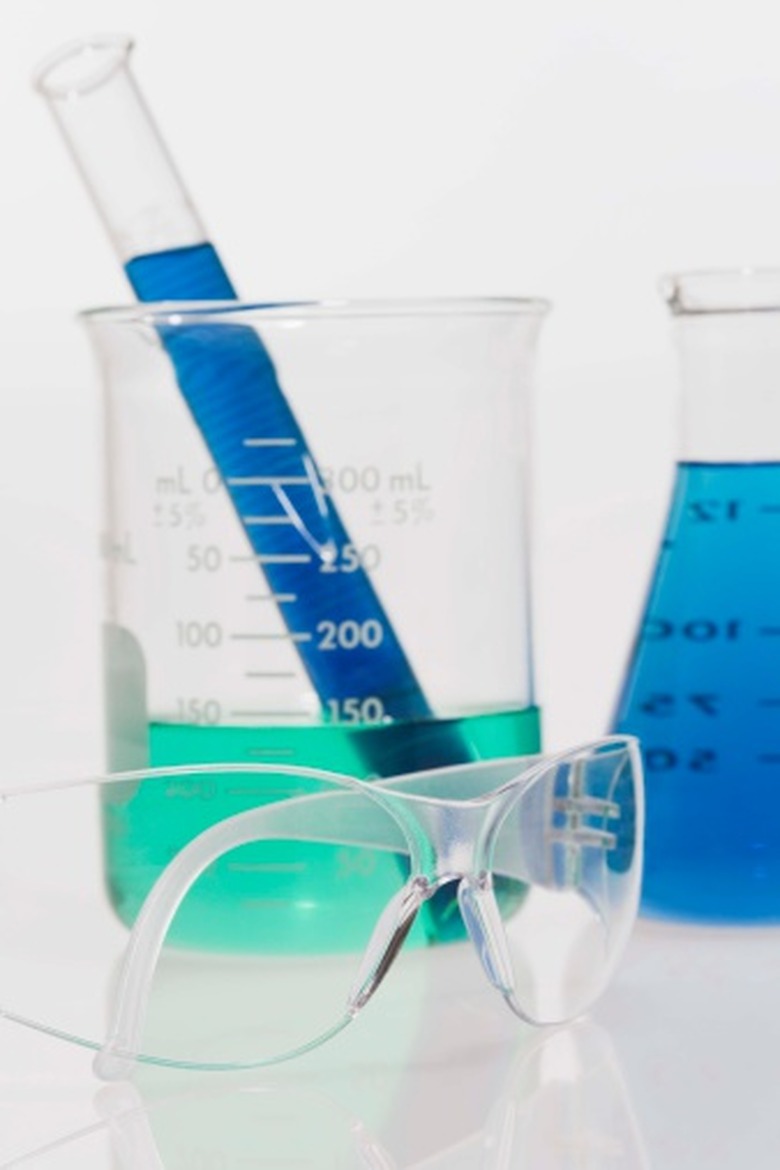Water Density Science Experiments
Density is measured as the ratio of a material's mass in comparison to its volume, and is an important property of materials. All materials have their own specific density, which can sometimes be used to identify the material and predict its properties. Water is a common, everyday material that can be used to demonstrate many useful and interesting lessons about density.
Mixing Liquids
Mixing Liquids
Water and oil do not mix; this is a well-known phenomenon that is actually a display of how liquids of different densities behave with each other. Liquids with low densities will float on those of higher densities. Put a little food coloring in some water to make it easier to see, then mix it in a beaker with equal volumes of corn syrup and vegetable oil. Wait and watch as the liquids separate. Which one is at the top? What does this tell you about the density of water? Try this with different liquids or chemicals for a more complex experiment.
Object Density
Object Density
Since the density of water is well known, one can use it to learn about the densities of other objects. Take three beakers and pour some water into one, corn syrup into another, and vegetable oil into the last. Then take some small objects that are about the same size, like a balled-up piece of paper or foil, a small stone or a cork. Put these objects into each beaker and watch what happens. If the object floats, then its density is less than that of the liquid. This procedure, though different liquids are used, is sometimes used to find the specific gravity of oddly shaped objects with unknown densities, like rough gemstones.
Salt Water
Salt Water
Students who have been to the ocean will likely know that it is much easier to float in salt water than fresh water. This is because salt water is much denser than fresh water, and objects float when they are less dense than the substance that they are floating in. The ions in salts dissolve well in water, adding more mass but not affecting the volume very much. Take two small beakers of water and add salt to one. You'll need quite a bit of salt, at least several tablespoons. Stir to dissolve the salt, then place an uncooked egg in each beaker. If done correctly, the beakers look identical but the egg in the saltwater beaker floats.
Temperature and Density
Temperature and Density
Density is dependent upon several factors, including temperature. Hot water is less dense than cold water, and you can demonstrate this in a very visual way. Take two small jars of water, one hot and one cold, and put food coloring in each so that they can be easily seen. Put a thin piece of cardboard over the mouth of the jar of hot water and flip it upside down. Then put it over the mouth of the jar of cold water and take away the cardboard. For a short period of time, the colors will remain separate because the water on top has a lower density. This experiment can be a bit messy, so take precautions. As an alternative, you can use a dropper to put small amounts of hot water into a beaker of cold water and watch what happens. Cold water is denser than the hot water, but ice floats. Why do you think this is?
Cite This Article
MLA
Leggett, Rochelle. "Water Density Science Experiments" sciencing.com, https://www.sciencing.com/water-density-science-experiments-8029220/. 24 April 2017.
APA
Leggett, Rochelle. (2017, April 24). Water Density Science Experiments. sciencing.com. Retrieved from https://www.sciencing.com/water-density-science-experiments-8029220/
Chicago
Leggett, Rochelle. Water Density Science Experiments last modified August 30, 2022. https://www.sciencing.com/water-density-science-experiments-8029220/
